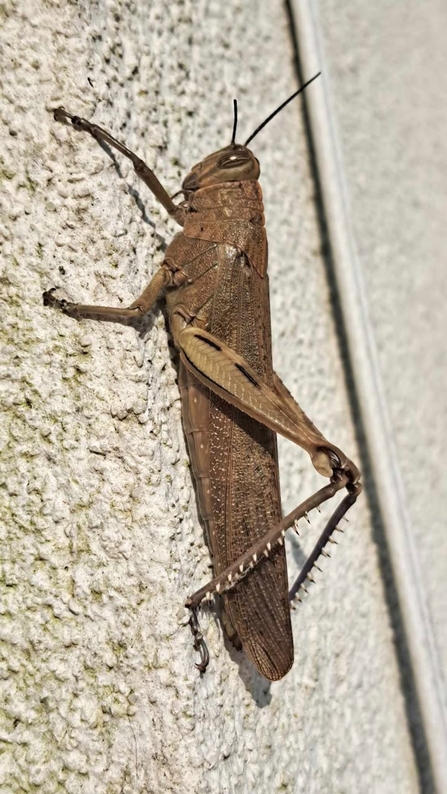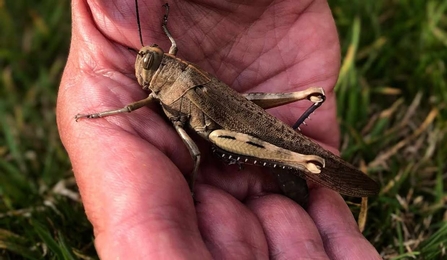Cornwall Wildlife Trust has confirmed a recent sighting of an Egyptian locust (Anacridium aegyptium) in south west Cornwall. The insect was recorded by supporter Tonny Steenhagen in their garden. Records suggest this is the first confirmed sighting of the species in Cornwall in 2025.
The Egyptian locust is typically found in Mediterranean Europe and North Africa. Occasional records in the United Kingdom are thought to be the result of strong southerly and easterly winds carrying individual insects across the continent. It is likely that this specimen arrived during the same weather system that recently deposited Saharan dust across vehicles and buildings in Cornwall.


